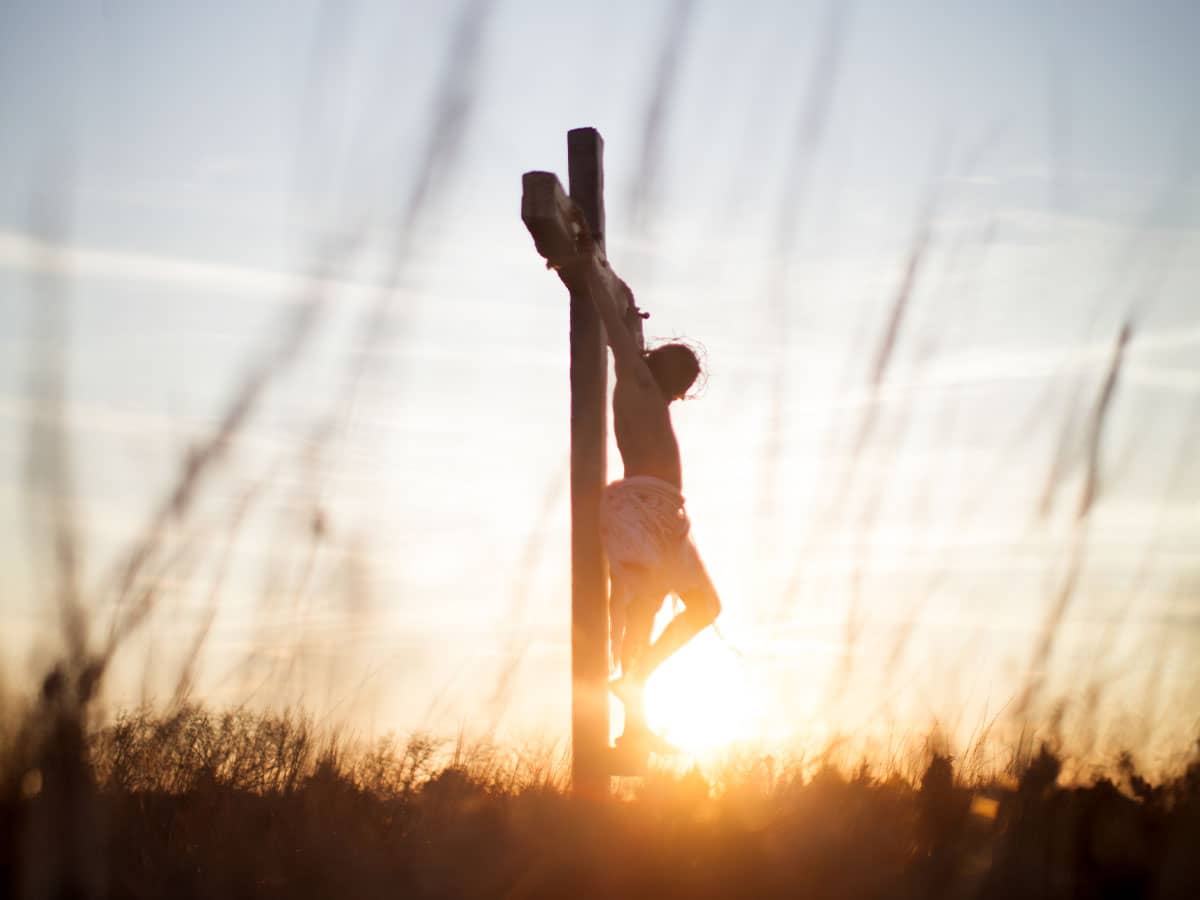
Palm Sunday is the feast that falls on the Sunday before Easter – On this day we celebrate the triumphal entry of Jesus into Jerusalem, one week before His resurrection (Matthew 21:1-11). On Palm Sunday, Christian churches will be decorated with palm branches, their parishioners crafting palm branch crosses in their pews and incorporating them into their services. Many hand out palm branches that have been blessed by the pastor of the congregation, who will then make them into crosses. The branch is meant to serve as a reminder of Jesus’ victory over death. Catholic churches also often have processions using the palms. A priest will walk towards the church, while the congregation places palms before him. Given these palms are blessed, they are therefore holy. With that status, they aren’t simply thrown away. The palms are held until the next year, where they are burned to make ashes for Ash Wednesday. It is a moving service and quite a sight to see.
On this day, Jesus entered the holy city; He neared the culmination of a long journey toward Golgotha. He had come to save the lost (Luke 19:10), and now was the time – this was the place – to secure that salvation. Palm Sunday marked the start of what is often called “Passion Week” the final seven days of Jesus’ earthly ministry. We know from Scripture that Palm Sunday was the “beginning of the end” of Jesus’ work on earth.
Palm Sunday began with Jesus and His disciples traveling over the Mount of Olives. The Lord sent two disciples ahead into the village of Bethphage to find an animal to ride. They found the unbroken colt of a donkey, just as Jesus had said they would. The Bible tells us, “When He drew near to Bethphage and Bethany, at the mount that is called Olivet. He sent two of the disciples, saying, ‘Go onto the village in front of you, where on entering you will find a colt tied, on which no one has ever yet sat. Untie it and bring it here” (Luke 19:29-30). When they untied the colt, the owners began to question them. The disciples responded with the answer Jesus had provided: “The Lord needs it” (Luke 19:31-34). Amazingly, the owners were satisfied with that answer and let the disciples go. “They brought [the donkey to Jesus, threw their cloaks on the colt and put Jesus on it]” (Luke 19:35).
As Jesus ascended to Jerusalem, a large multitude gathered around Him. The crowd understood that Jesus was the Messiah; what they did not understand was that it wasn’t time to set up the kingdom yet – although Jesus had tried to tell them so. The Bible tells us, “As they heard these things, He proceeded to tell a parable, because He was near to Jerusalem, and because they supposed that the Kingdom of God was to appear immediately. He said therefor, ‘A nobleman went into a far country to receive for himself a kingdom and then return’” (Luke 19-11-12). The crowd’s actions along the road give rise to the name “Pam Sunday.” A very large crowd spread their cloaks on the road, while others cut branches from trees and spread them on the road” (Matthew 21:8). In strewing their cloaks on the road, the people were giving Jesus the royal treatment – King Jehu was given similar honor at his coronation (2 Kings 9:13). John records the detail that the branches they cut were from Palm trees.
On that Palm Sunday, the people also honored Jesus verbally: “The crowds that went ahead of Him and those that followed shouted, ‘Hosanna to the Son of David! Blessed is He who comes in the name of the Lord! Hosanna in the highest heaven!'” (Matthew 21:9). In their praise of Jesus, the Jewish crowds were quoting Psalm 118:25-26, an acknowledged prophecy of the Christ. The allusion of the Messianic psalm drew resentment from the religious leaders present. “Some of the Pharisees in the crows said to Jesus, ‘Teacher, rebuke your disciples!’” (Luke 19:39). However, Jesus saw no need to rebuke those who hold the truth. He replied, “I tell you…if they keep quiet, the stones will cry out!” (Luke 19:40).
Some 450 to 500 years prior to Jesus’ arrival in Jerusalem, the prophet Zechariagh had prophesied the event we now call Palm Sunday: “Rejoice greatly, Daughter Zion! Shout daughter Jerusalem! See your king comes to you, righteous and victorious, lowly and riding on a donkey, on a colt, the foal of a donkey” (Zechariah 9:9). The prophecy was fulfilled in every particular way, and it was indeed a time of rejoicing, as Jerusalem welcomed their King. Unfortunately, the celebration was not to last. The crowds looked for a Messiah who would rescue them politically and free them nationally, but Jesus had come to save them spiritually. First things first, and mankind’s primary need is spiritual, not political, cultural or national salvation.
Ultimately, Palm Sunday commemorates Jesus’ entrance into Jerusalem. As he rode into the city on a donkey, His followers spread palm branches at His feet and called Him “Hosanna” or “Savior.” Palm branches were considered symbols of victory and triumph at the time. Days later, the people of Jerusalem would turn on Jesus and demand Romans crucify Him. According to Christianity, Jesus would actually be the Savior of His people – as He would save them from their sins, conquering death in doing so.

